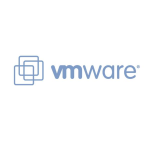How-to Configure VMware ESXi 5 SNMP Service
Categories:
[ ][1]You might want to monitor your ESXi server host from a monitoring application and need SNMP for it. By default SNMP on VMware ESXi is not enabled and you need to use VMware CLI to enable and configure VMware ESXi5 SNMP.
][1]You might want to monitor your ESXi server host from a monitoring application and need SNMP for it. By default SNMP on VMware ESXi is not enabled and you need to use VMware CLI to enable and configure VMware ESXi5 SNMP.
First of all download and install [VMware vSphere CLI 5.0][2]
After installing VMware vSphere CLI you can go to bin directory :
cd "C:\Program Files (x86)\VMware\VMware vSphere CLI\bin\"
```
You can show current configuration with
vicfg-snmp.pl --server [hostname or ip address] --username [username] --password [password] --show
```
Things inside square braces is the one thay you have to change like hostname or ipaddress, username and password. if you don't want to show password there just omit the –password. It will prompt you for password everytime you execute a command. For example for command above you can use
vicfg-snmp.pl --server [hostname or ip address] --username [username] --show
```
Now let's create community name for VMware ESXi 5 SNMP:
vicfg-snmp.pl --server [hostname] --username [username] --password [password] -c [communityName]
```
Now create trap to our monitoring server. The command below, we send trap from ESXi host.example.com to monitoring host target.example.com using port 162 on monitoring server and using secretCommunity as communityName
vicfg-snmp.pl --server [host.example.com] --username root --password password -t [target.example.com@162/secretCommunity]
```
Don't forget to enable snmp service on the host. The hostname here is ESXi host not monitoring server.
vicfg-snmp.pl --server [hostname] --username [username] --enable
```
You can verify your configuration using
vicfg-snmp.pl --server [hostname or ip address] --username [username] --password [password] --show
```
To test sending trap you can use
vicfg-snmp.pl --server [hostname or ip address] --username [username] --password [password] --test
```
You can find further information regarding VMware ESXi 5 SNMP configuration on [KB 1008065][3]. Hope this help. See ya!
[1]: https://www.howtodojo.com/wp-content/uploads/2013/01/vmware-logo-blog.png
[2]: https://my.vmware.com/group/vmware/details?downloadGroup=VCLI50U1&productId=268
[3]: http://kb.vmware.com/selfservice/microsites/search.do?language=en_US&cmd=displayKC&externalId=1008065